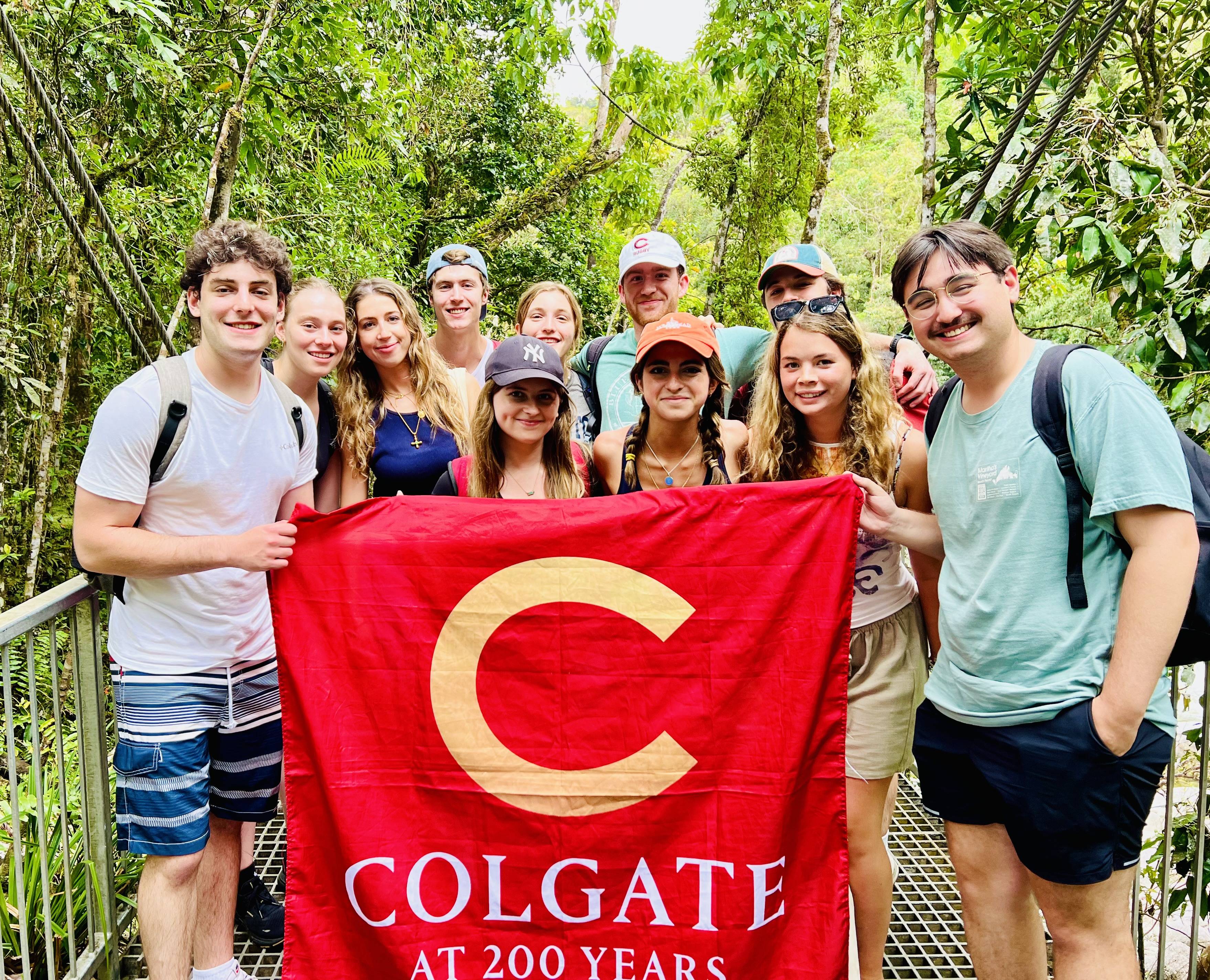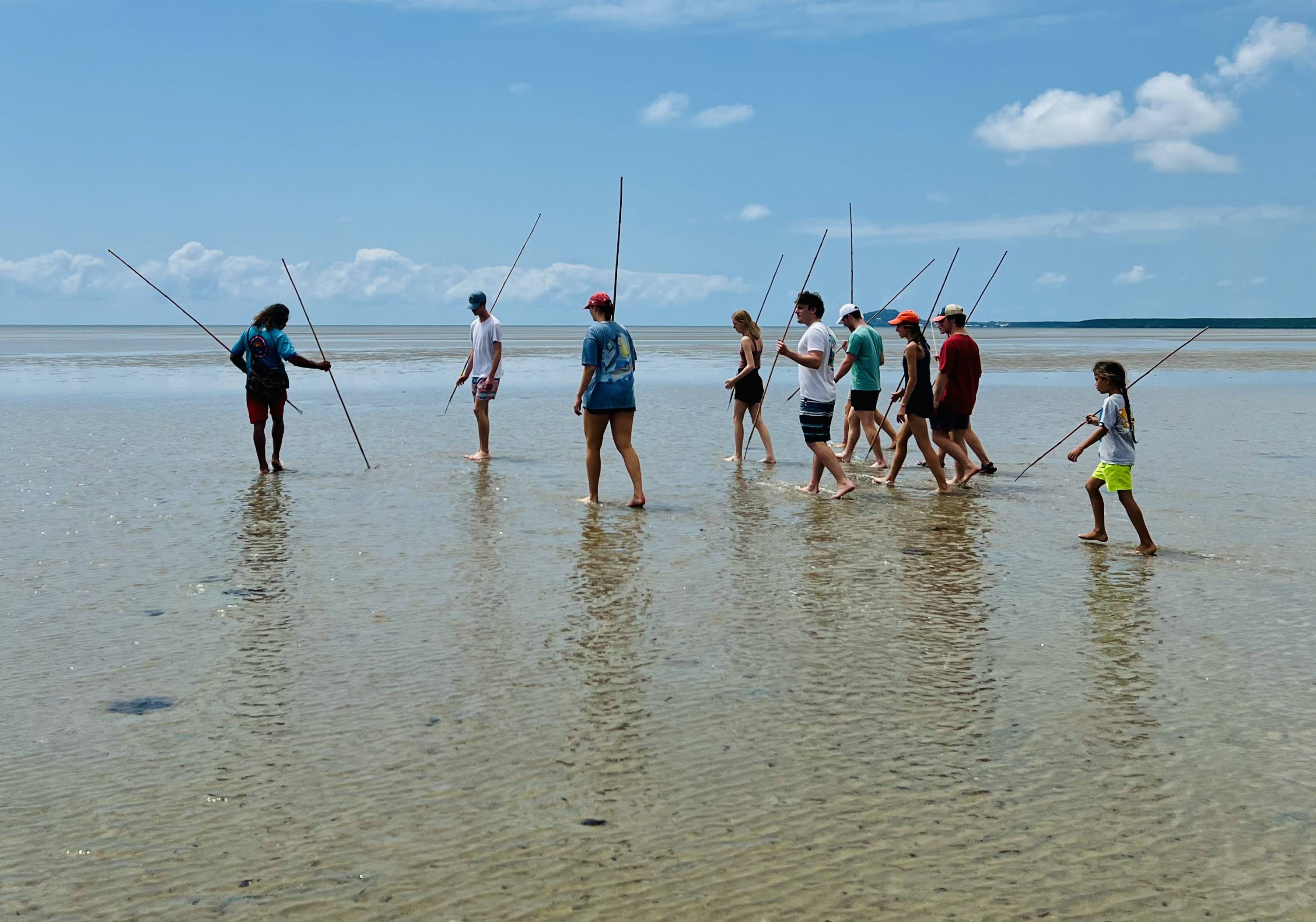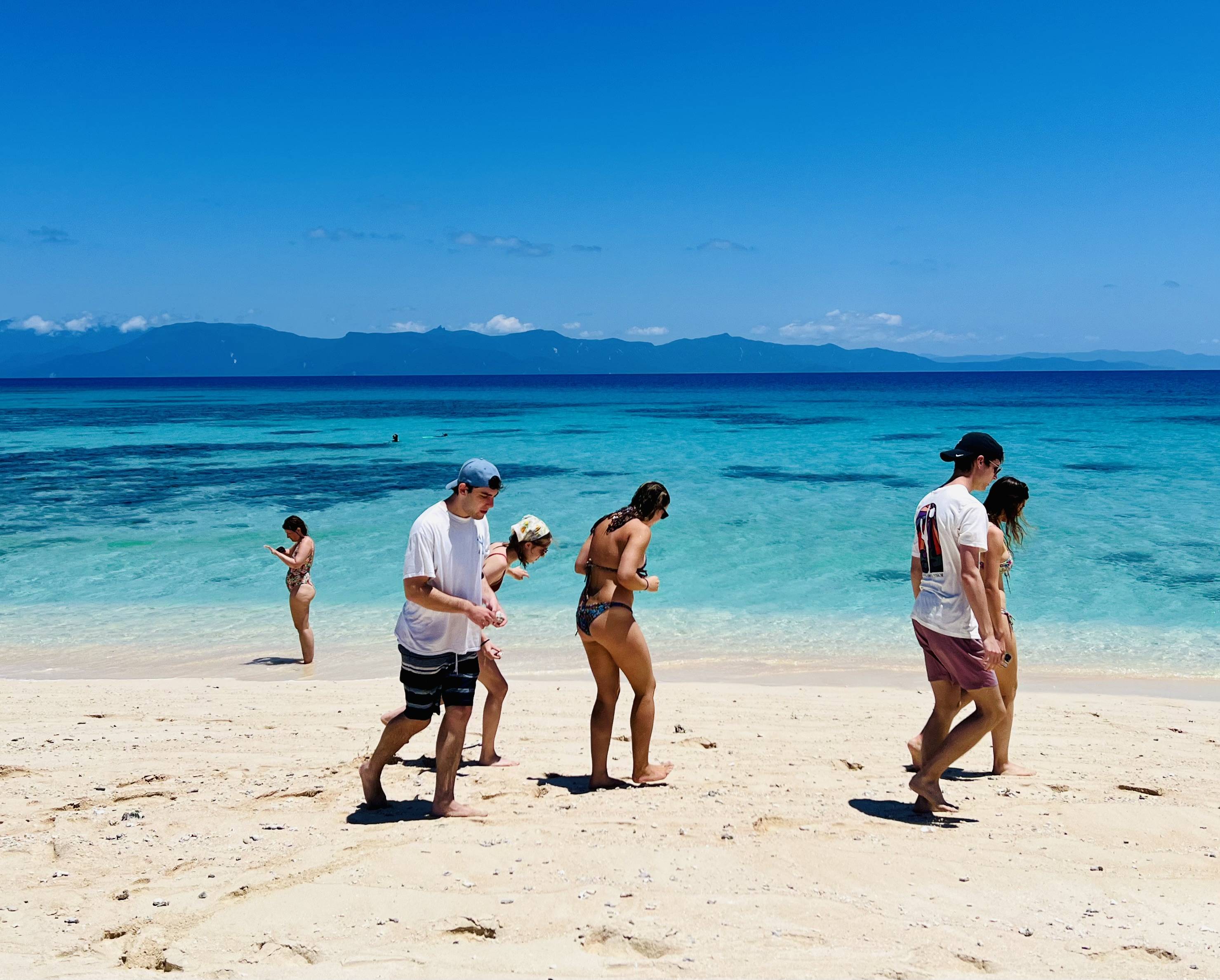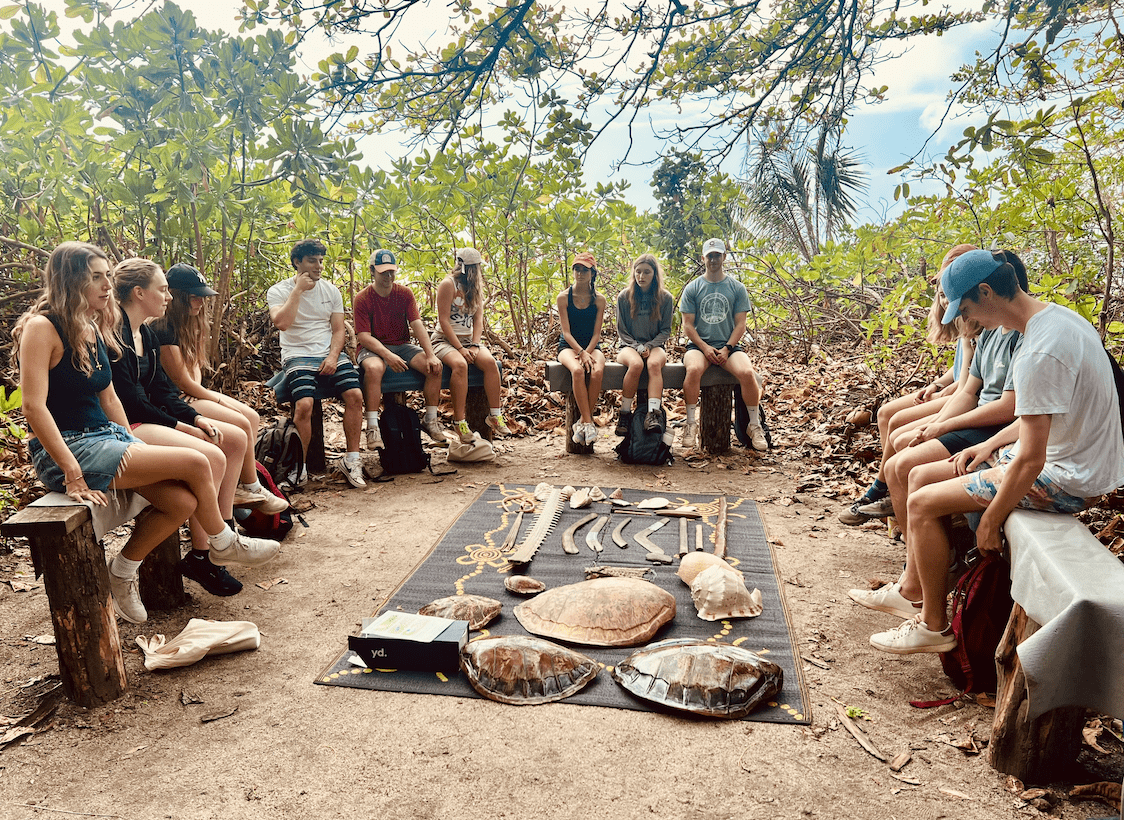Written by: Leigha Schultze ’26, Zoë Eisel ’25, and Kianna Criscuola ’26
The students on the Fall 2024 Australia Study Group taking ENST 309 (Australian Environmental Issues) with Professor Andy Pattison are lucky to get two spring breaks this school year, and we just spent our first one on an excursion to the Port Douglas, Queensland area! We traveled throughout northern Queensland for a rare opportunity to explore coral reef and rainforest ecosystems, learn Aboriginal cultural and traditional ecological knowledge, and try crocodile spring rolls along the way.
Our first morning in Port Douglas was well-spent with a visit to the Kuku Yalanji Cultural Habitat in Cooya Beach, where members of the local community shared with us Aboriginal knowledge regarding hunting, living with the environment, and making use of the resources at your disposal as they change based on climate. He told us how to maximize the meat provided from an adult sea turtle, which woods are best for carving boomerangs and which are better suited for clapsticks, and showed us a variety of shells to examine up close. Giving us a performance on the didgeridoo (yidaki), he demonstrated how different mouth and throat movements can replicate animal noises, weaving together stories of the short, bouncing kangaroo with the growling crocodile and the howling dingo.
After our discussion, we took to the beach with spears in hand to hunt crabs. Without being overly boastful, our group pulled a whopping six crabs that we shortly thereafter prepared for lunch. While waiting for the crabs to cook, the class had the privilege of speaking with Uncle Ben about his experience growing up as part of the stolen generation. He detailed his efforts to document the history he lived through so that the stories could be passed down for generations. He then showed us how to properly break open the crabs to share a delicious meal together.
Following our time spent with the Kuku Yalanji guides, we visited Mossman Gorge, the entryway to the World Heritage-listed Daintree Rainforest. Some students embarked on a scenic hike, while others chose to swim in the white water while enjoying the surrounding sights and sounds.
On our second full day in Queensland, we took a guided boating tour of the Great Barrier Reef. There was certainly an element of sadness in seeing the Reef, knowing that provided its current trajectory, much of it will succumb to the consequences of climate change and this may very likely be a first and final experience for many of us. There is also, of course, no ignoring the frequency with which companies profit directly at the Reef’s expense. With this being said, we felt our tour company did an excellent job in educating us on how to be conscious and careful while entering the reef ecosystem, explaining current threats the Great Barrier Reef is facing, and teaching us about the many indicator species that help provide insight into the health of their ecosystem. Some of our personal favorite sights from snorkeling within the reef were the parrot fish, giant clams, and our brief encounter with a sea turtle.
We concluded our trip with an adventurous river cruise that allowed us to spot saltwater crocodiles, snakes, and more. Joined on our boat with white-lipped tree frogs, we watched keenly for crocs. In almost no time, we spotted a 15-foot male croc, affectionately called Lumpy, making his way across the side of the river. He approached the region's iconic mangroves, which David Attenborough himself has filmed on multiple occasions. Scarface, the largest croc known to the river, may have evaded us, but we did encounter a female croc basking in the sun.
After the river tour, we returned to the Daintree Rainforest, the oldest continuously living rainforest in the world at 180 million years old. During our hike, our guide taught us about strangler figs, the endangered cassowary plum (kurranji), and the endemic white aspen fruits. We spotted a monitor lizard and enjoyed some time on the beach before grabbing lunch at a cafe outside a watering hole. Many students took advantage of the watering hole to swim in the rainforest and jump off a rope swing. We wrapped the adventure with ice cream made from locally farmed tropical fruits like yellow sapote, passion fruit, wattle seed, and coconut.
We are immensely grateful to have had the opportunity to visit Queensland, learn about Aboriginal culture, and expand our ecological knowledge about land and sea Country here in Australia. From the bright blue starfish to the flying foxes, this is an experience we will never forget. After departing Cairns, our class split up to embark on different adventures ranging from trips to Fiji, Darwin, and a nineteen-hour road trip to Brisbane.



